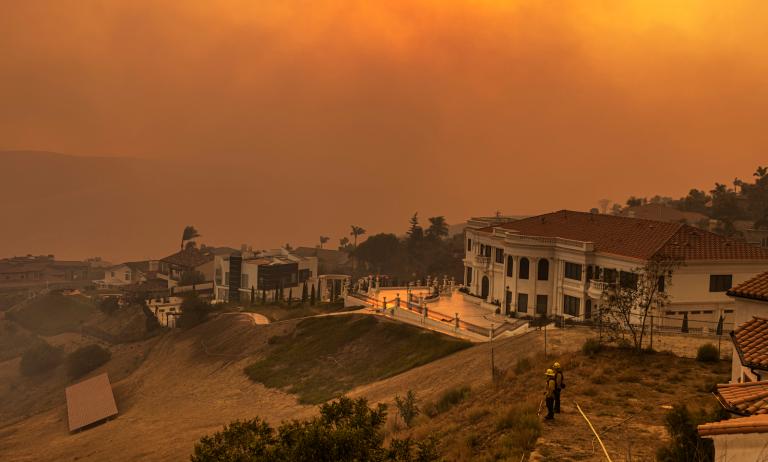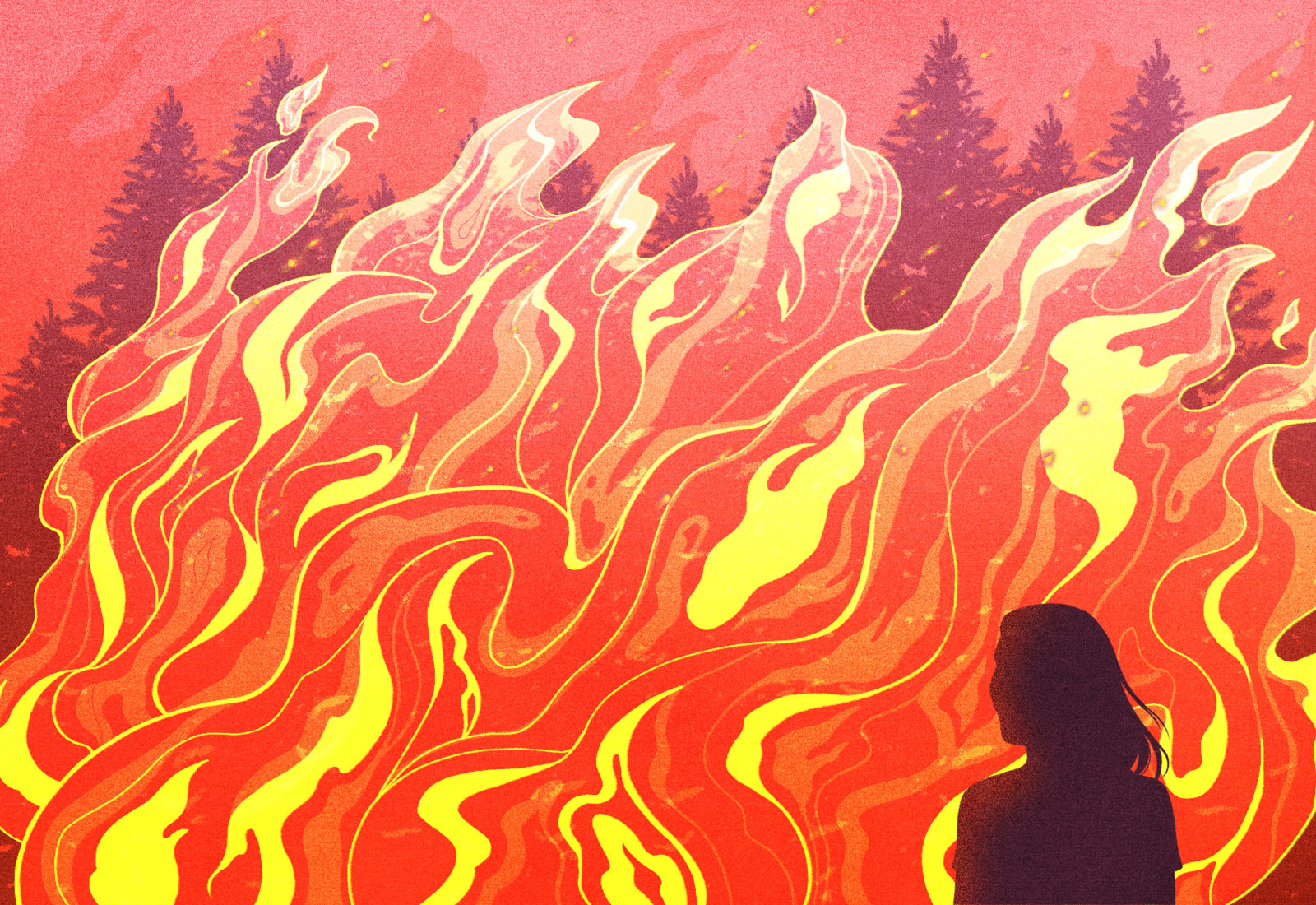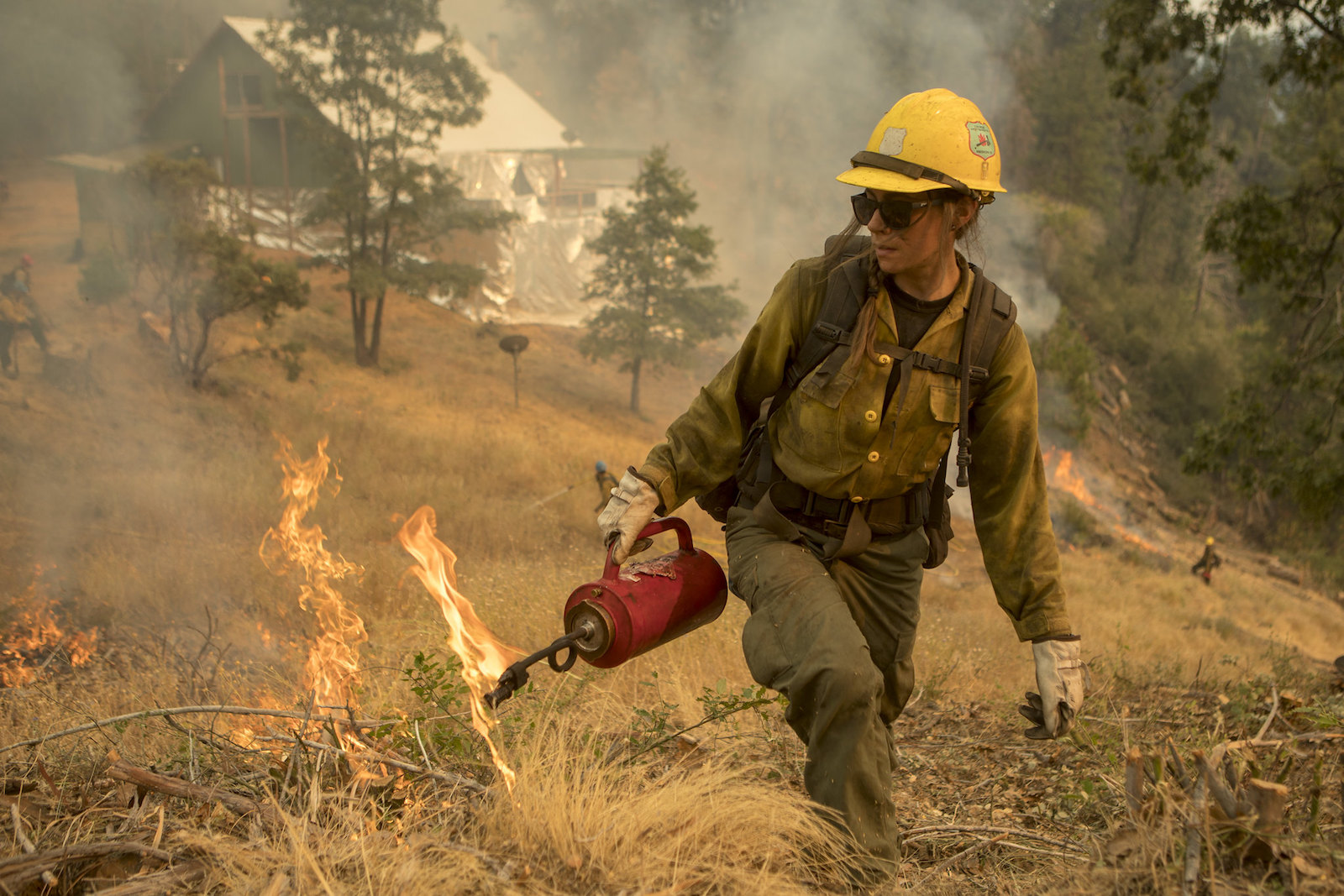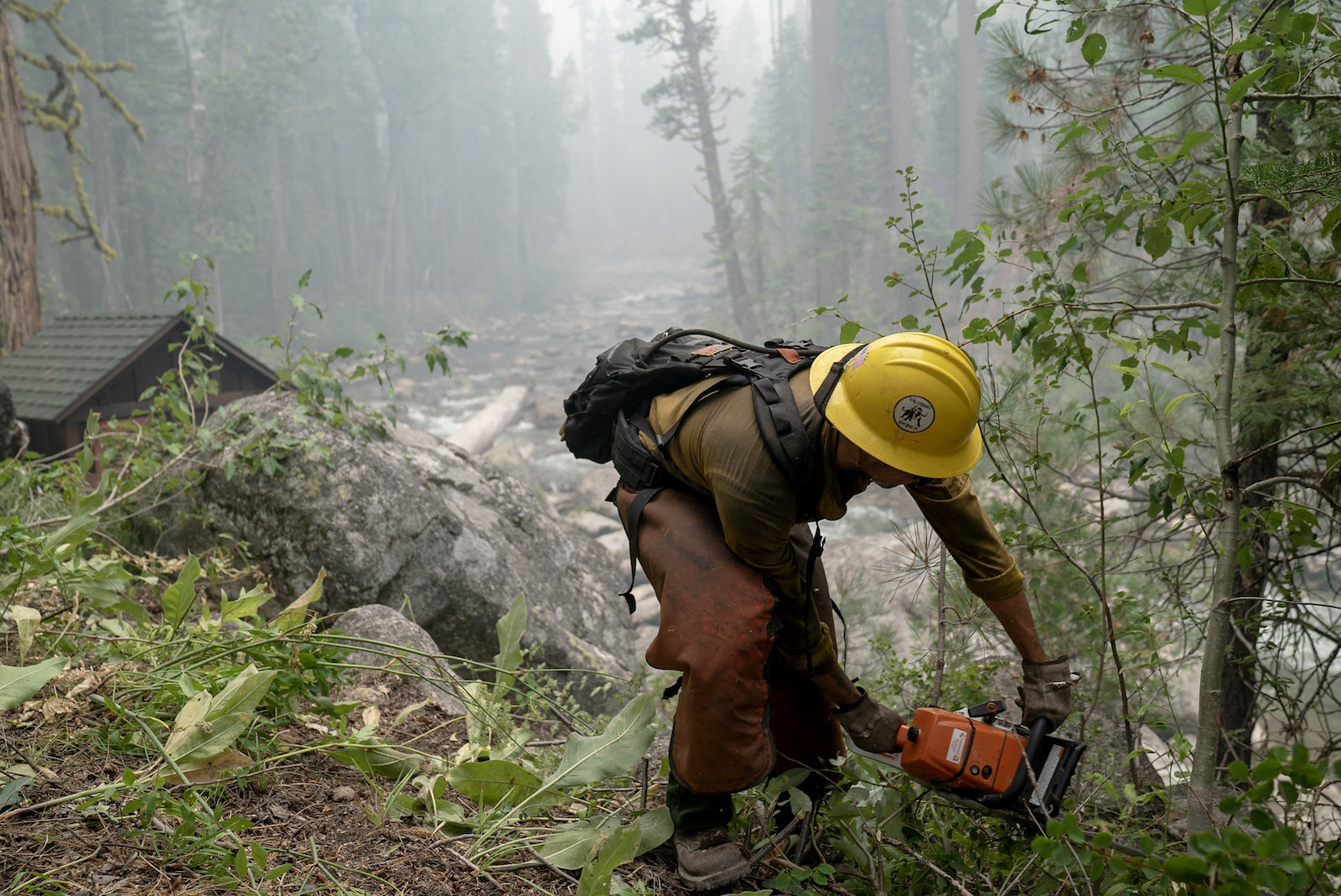This piece is adapted from the forthcoming book The Pyrocene: How We Created an Age of Fire, and What Happens Next, which will be published by University of California Press in September.
The fires of 2020 seemed to be everywhere, a pyric pandemic.
Places that commonly burn, such as Australia, California, and Siberia, burned with epic breadth and intensity. Australia had established a historic standard for a single outbreak with its 2009 Black Saturday fires; its 2019–20 Black Summer burns broke historic standards for a season. California endured its fourth year of serial conflagrations, each surpassing the record set the season before. Like a plague, the fires spread across Oregon and Washington, and then leaped over the continental divide to scour the Colorado Rockies. Siberian fires moved north of their home territory and flared beyond the Arctic Circle. Places that naturally wouldn’t burn, or that would burn only in patches, were burning widely. The Pantanal wetlands in central South America burned. Amazonia had its worst fire season in 20 years.
What the fires’ flames didn’t touch, their smoke plumes did. Australia’s smoke circled the globe. The palls from the West Coast fires spread haze through the country; they struck with the symbolic impact and visual intensity that dust storms evoked during the 1930s. The fires’ smoke obscured subcontinents by day; their lights dappled continents at night, like a Milky Way of flame-stars. Where fires were not visible, the lights of cities and of gas flares were: combustion via the transubstantiation of coal and gas into electricity. To many observers, they appeared as the pilot flames of an advancing apocalypse. Even Greenland burned.
The smoke and flames of last year’s fire season were a symptom, not a syndrome. Now they are back, like a revived wave of COVID. Greece and Turkey have replaced Australia as this year’s ground zero. Evacuations by sea beneath red skies on Evia and Mugla echo those from Mallacoota a year before. The West Coast fires have moved north into British Columbia. Siberia burned at an even larger scale. Algeria burned. Outbreaks follow migrating heat domes. What didn’t dry, drowned or flooded after burning. Wetting and drying is the climatic rhythm behind landscape fire; as each phase intensified into drought and deluge, so fires swelled. Smoke flowed across continents, like dust storms on Mars. But such rolling insurgencies were only half the story.
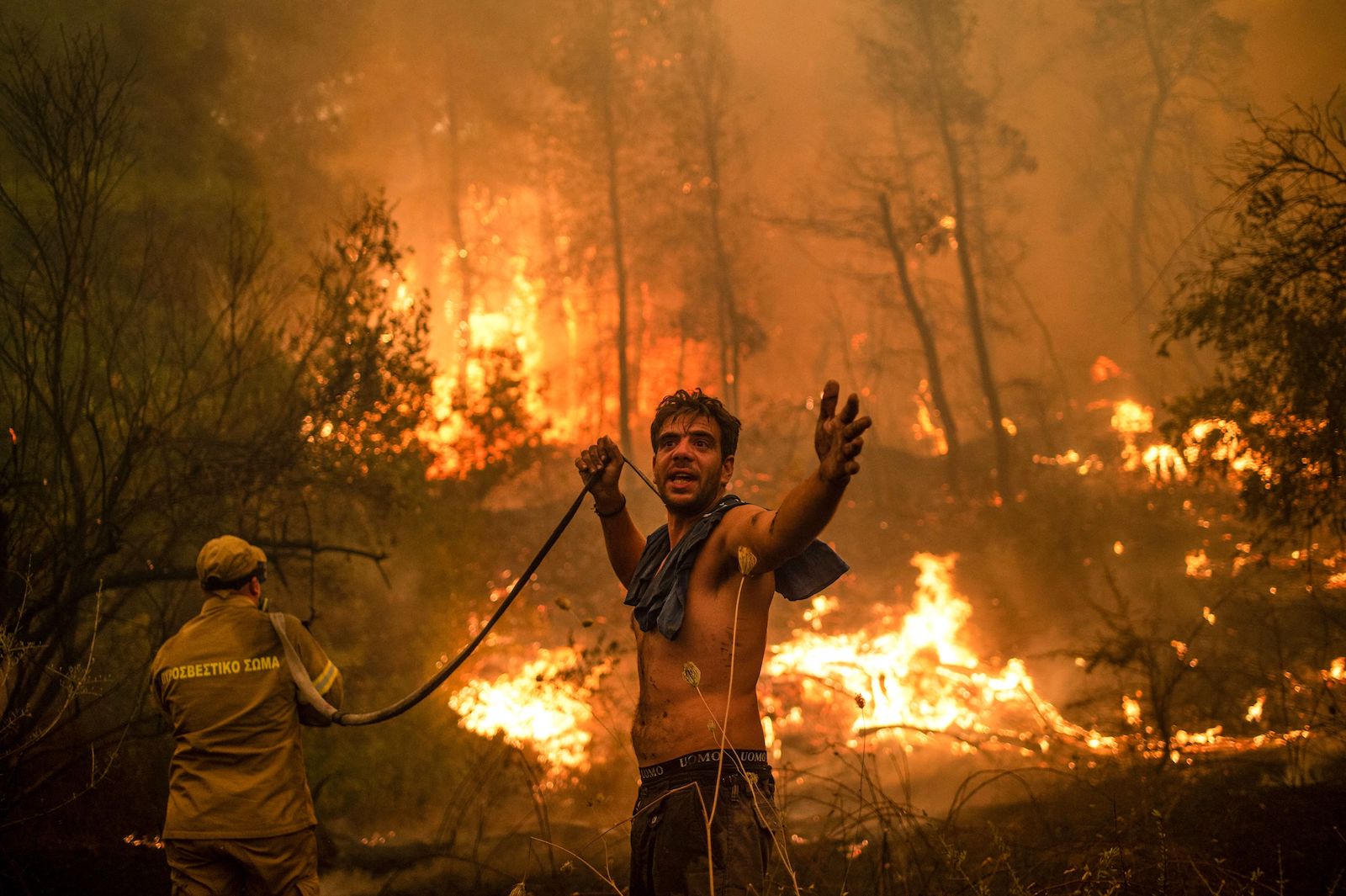
The planet’s current unhinged pyrogeography has also been shaped by fires that should have been present and weren’t. These are the fires historically set by nature or people to which landscapes had adapted. Now those fires are mostly gone, and the land has responded by degrading ecologically while building up combustibles to stoke more savage wildfires. The Earth’s fire crisis, that is, is not just about the bad burns that trash countrysides and crash into towns. It is equally about the good fires that have vanished because they were extinguished or no longer lit. The Earth’s biota is disintegrating as much by tame fire’s absence as by feral fire’s outbreaks.
There is a third facet to this planetary fire triangle, one that looks beyond present and absent fires to deep time. Its combustibles come not from living biomass, but from lithic ones. With increasing frenzy, humans are binge-burning fossil fuels. They are taking fuel out of the geologic past, burning it in the present with complex (and little understood) interactions, and then releasing the effluent into the geologic future. Industrial combustion has restructured the dynamics of fire on Earth. Fossil fuel combustion acts as an enabler, as a performance enhancer, and by its disrupting effects on the atmosphere as a globalizer. It has ensured that little of the Earth will be untouched by fire’s reach if not its grasp.
The dialectic between burning living and lithic landscapes explains most of the paradoxes of Earth’s current fire scene. The first is that the more we try to remove fire from places that have co-evolved with it, the more violently fire will return. Without the counterforce provided by petrol-powered machines, from helicopters to portable pumps, there could have been no serious effort to exclude fire in the first place. Second, while wildfires gather more and more media attention, the amount of land actually burned overall is shrinking. Fossil fuel societies find surrogates for fire and remove it (or suppress it) from landscapes. California experienced 4.2 million burned acres in 2020; in pre-industrial times, it would have known perhaps 15 million to 20 million acres burned, though not in wild surges. Fire would have resembled irrigated fields, not sprawling floods. The third paradox is that as we ratchet down fossil fuel burning, we’ll have to ratchet up our burning of living landscapes. We have a fire deficit. We have many landscapes ill-adapted to what they are experiencing. We need to make firescapes more robust against what is coming, and fire is the surest way to do it.
Add up all these fire influences — those directly through flame, those indirectly through smoke, removed fire, fire-enabled land use, and a warming climate — and you have the contours of a planetary fire age, the fire-informed equivalent of an ice age. You have a Pyrocene.

The Pyrocene proposes a fire-centric perspective on how humans continue to shape the Earth. It renames and redefines the Anthropocene according to humanity’s primary ecological signature, which is our ability to manipulate fire. It comes with a narrative — the long alliance between fire and humans. It proposes an analogy for the future — the sum of our fire practices is creating a fire age that is equivalent in stature to the ice ages of the Pleistocene. With fire as a theme, it offers a sideways view on climate change, continental scale shifts in biogeography, the sixth extinction, changes in ocean chemistry and sea level, and the character of the human presence on Earth. Like fire, the Pyrocene integrates its surroundings — geographic, historical, institutional, intellectual.
The history it tells chronicles three fires. The first is the fire of nature—fires that had appeared as soon as plants colonized continents and have remained ever since. Fossilized charcoal traces their presence back 420 million years. A second is the fire set and abetted by humans. Thanks to cooking, a dependence on fire had become coded into hominin DNA; thanks to favorable conditions at the end of the last ice age, this expression of fire has steadily spread everywhere humans have. Together, people and fire have competed with nature’s fire and expanded the overall domain of burning such that very little of terrestrial Earth — places blanketed by ice, implacable deserts, sodden rainforests — lack fire. Still, human-kindled fires burned as nature’s did, in living landscapes, subject to shared conditions and constraints. The third fire to appear is qualitatively different.
These fires burn lithic landscapes no longer bounded by such ecological limits as fuel, season, sun, or the cadence of wetting and drying. The source of combustibles is essentially unbounded; the problem is the sinks, where to put all the effluent. This third fire has unsettled not only climate and biotas, but the affinity between people and fire. Second (anthropogenic) fire was an act of domestication, perhaps the model for domesticating, in which people had transformed wild fire into hearth and torch just as they had cultivated teosinte into maize, and aurochs into dairy cows. Both fire and people spread in a kind of mutual-assistance pact. There was a fundamental inequality in their relationship because fire could exist without humans while humans could not exist without fire. But both nature’s fires and humanity’s operated within a shared set of bounded conditions.
The third fire — industrial combustion — has decoupled that relationship. People can thrive without it, but it cannot flourish without people. It is about power; not using the power of fire to nudge, leverage, integrate, and quicken within living landscapes, but the brute force of fire distilled and mechanized. The second fire was a kind of mutual taming, a partnership. It helped create habitats more suitable for humanity, what the ancients called a ‘second nature.’ The third fire is just a tool, like a factory farm for combustion. It generates raw power. With it, humanity is fashioning a third nature, one that threatens to make the Earth progressively uninhabitable for its creators.
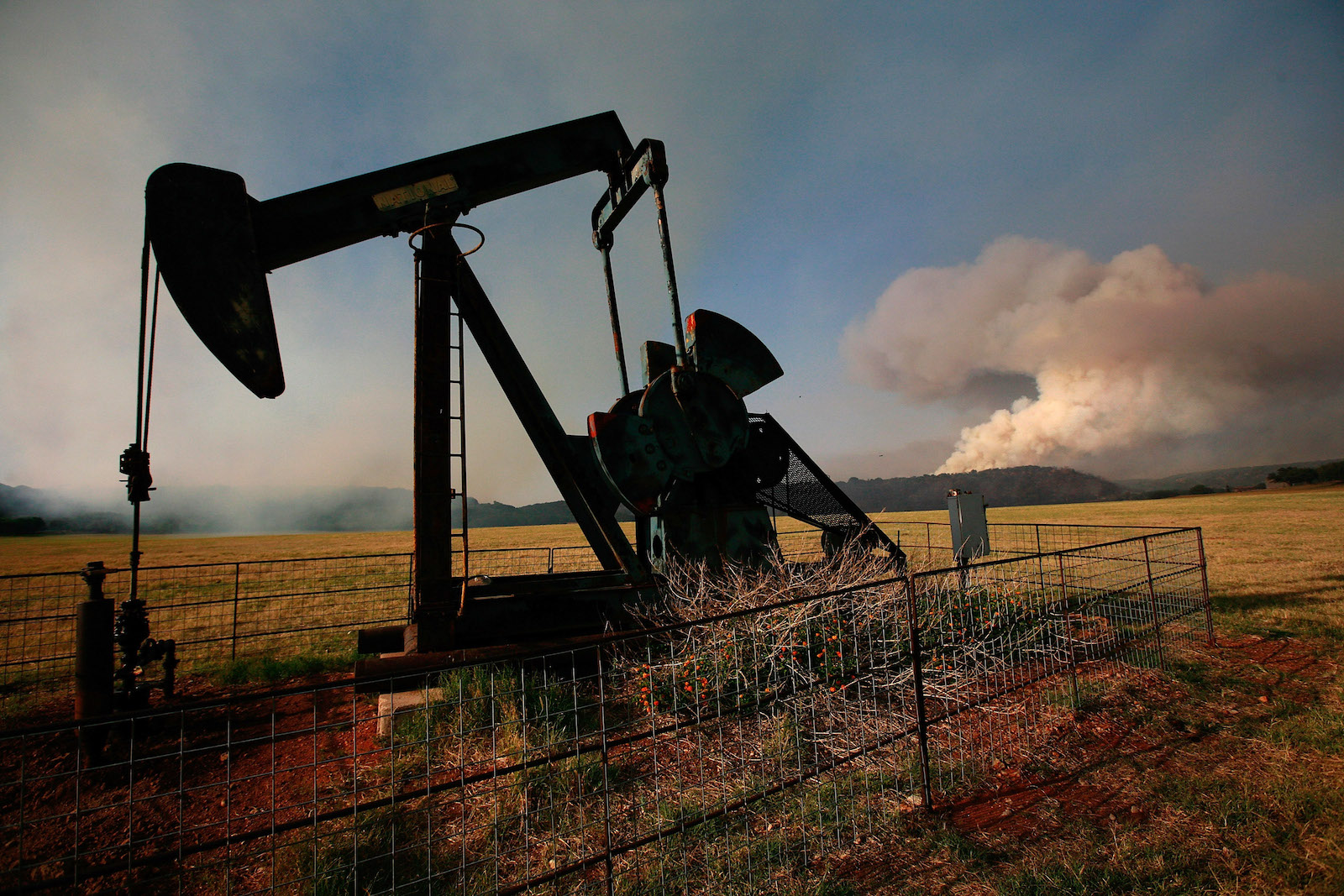
Nature’s fire has existed since plants colonized continents, some 420 million years ago. Anthropogenic fire has existed in some form for most of the Pleistocene, probably 2 million years or more, though it became a growing planetary presence across the Holocene, the last 10,000 years. It complemented and competed with nature’s fire. Initially, over the past two centuries, industrial combustion competed as well by seeking technological substitutes where possible and otherwise suppressing open fire wherever possible. Now, thanks to how it has restructured landscapes and unmoored climate, third fire is colluding with the others.
Over the last century, the terms of these interactions have changed. Something flipped. In unprecedented ways the Earth had too much bad fire, too little good fire, and too much combustion overall. It was not simply fire’s indirect relationship to climate that was upset: the whole of fire’s presence on Earth was deranged. The sum of humanity’s fire practices have overwhelmed the existing arrangement of ecological baffles and barriers. Fire is creating the conditions for more fire.
Since the onset of the last interglacial, we have systematically driven off the relics of the ice ages and fashioned, piece by piece, a more fire-friendly world that has yielded a fire-informed one. Propagating ice previously helped push the planet into an ice age; so likewise our binge burning is now propelling the Earth into a fire age.
We have created a Pyrocene. Now we have to live in it.

So what does a full-blown fire age look like, and can we adapt?
In the near term, the future will likely resemble today’s pyrogeography, but enhanced. Places that have fire now are likely to experience it more frequently and more intensely. Places that have little fire now may acquire it, depending on how climatic shifts interact with what people do. Slashing rainforest, draining peatland, abandoning cultivated fields – all can make biomass more susceptible to fire-favoring weather.
So long as the conditions that prevailed before a fire persist, fire will renew the scene and the old order will return. But if new species have come or old ones gone, if the weather sharpens its rhythms of wetting and drying, if land is cleared or drained or subject to grazing, then fire will catalyze a new arrangement. Probably it will be one more prone to fire, but a different kind of fire, as forests may shrink to shrublands, or scrub to grass, or prairie is overrun with woods. Fire is infinitely adaptable: It will synthesize whatever those new surroundings become. The issue is whether humanity can be equally adaptable.
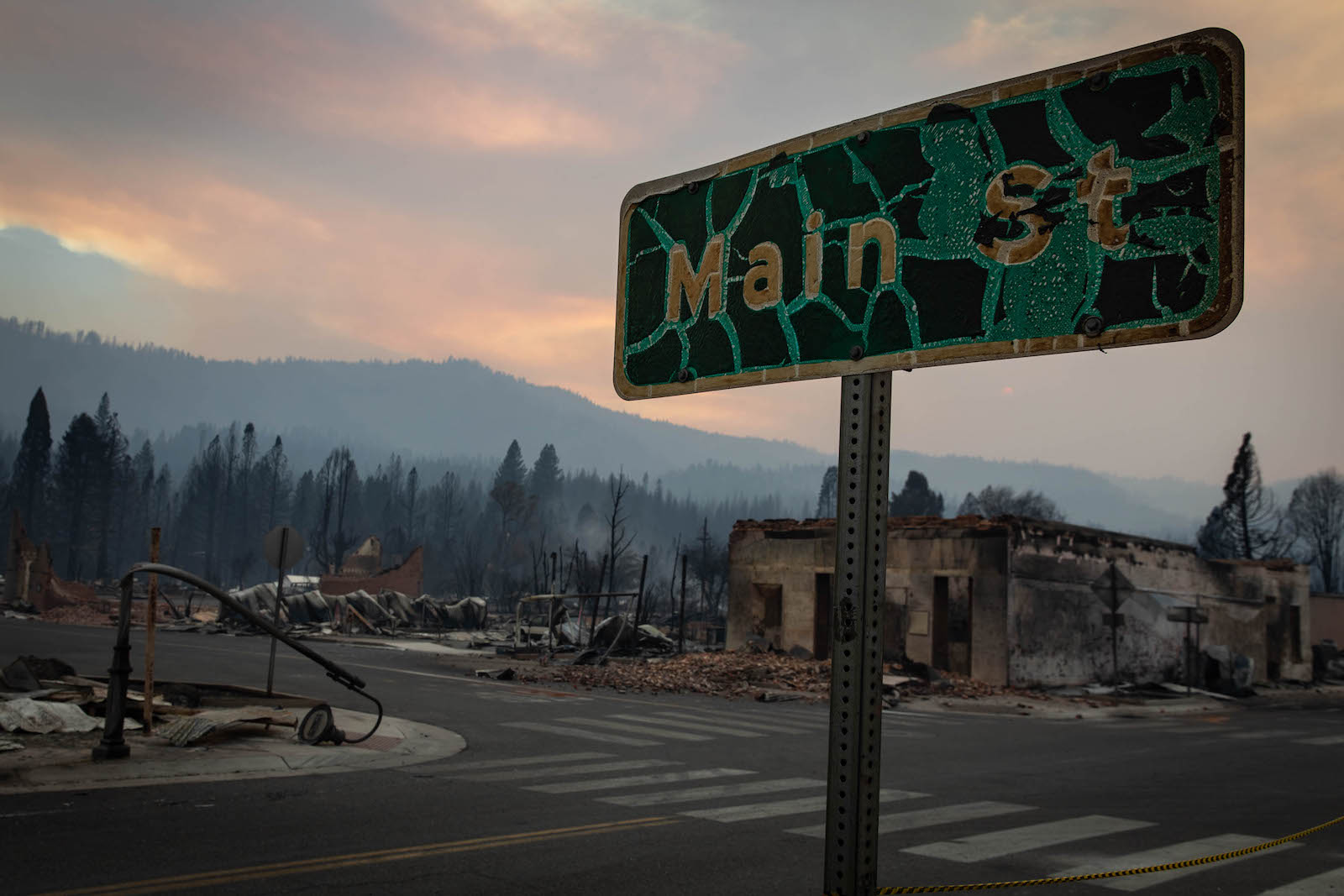
In simple terms, I imagine three hierarchies of responses. They have different scales and timetables of implementation but we need to do them all concurrently. In truth, we should have begun them 40 years ago.
First, limit the damage to communities and critical assets from wildfire. Most fires (97 percent) around inhabited areas start from people — no surprise. In principle, nearly all these ignitions can be eliminated or their threat dampened by removing their power to propagate at strength. Many megafires have begun from powerline failures in high winds; these have technical fixes. Others, such as those from abandoned camp or signal fires, can be significantly reduced with enough effort.
We know how to protect towns and exurbs from burning. Most ignitions result from ember blizzards that attack points of vulnerability — imagine a swarm of fire-kindling locusts. We don’t have to rebuild towns from scratch, just fix those critical weaknesses. Many of these concerns involve infrastructure and land use — issues we’ve recognized for decades that we need to address. We need to add fire to the mix. The know-how and tools exist. If we are serious, we can resolve many of the threats within a handful of years.
An intermediate suite of responses addresses fire in living landscapes, something humans have done all our existence as a species. We can leave fire to nature. We can substitute our fires for nature’s. We can alter the fuels that power any and all fires. We can try to exclude fire altogether.
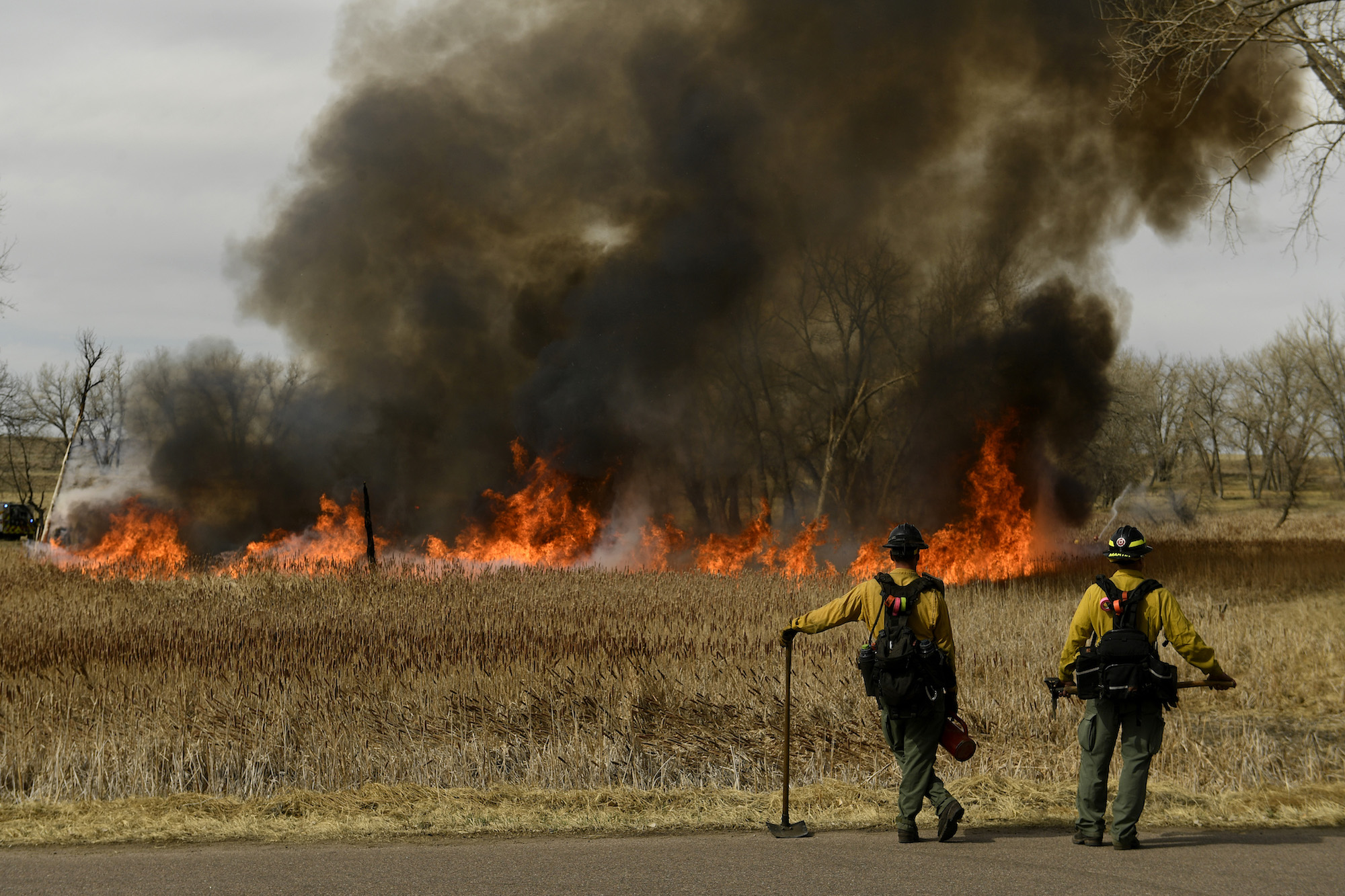
Leave it to nature. There are plenty of places for which fire is necessary as well as inevitable. It makes sense to monitor or loose-herd such fires — let them do the ecological work the land needs while keeping them within borders that don’t threaten human settlements. Remote areas and many nature reserves fall within this realm. Fire management in Alaska has long targeted point protection (keeping fire out of villages and towns) while burning out from secure perimeters such as rivers that box in fires and their smoke.
It’s not easy, and it involves a mindset alien to urbanites. In a city, every fire put out is a problem solved. In fire-prone landscapes, most fires put out are problems put off. We can’t, and shouldn’t want to, eliminate fire in the countryside as we can in the built-environment.
Substitute our fires for nature’s. The control of fire has long been at the core of human identity. We got small guts and big heads because we learned to cook food. We went to the top of the food chain because we learned to cook landscapes. Now we have become a geologic force because we’ve begun to cook the planet. Using fire is our ecological signature.
The trick is getting it right. Fire takes on the character of its context. A candle or cooking fire is mostly under our control because we created the fuels and designed the site where it burns. But in landscapes arranged by wind, mountains, gorges, and complex assemblages of vegetation there is little we govern. In true wildlands prescribed fire can be akin to training a grizzly bear to dance.
Yet humans have done it successfully for all our existence. A good fire culture codes the needed behavior into stories, seasonal migration routes, rites, as well as software and legal prescriptions. Oddly, by extinguishing traditional knowledge, modern science destroyed much of the basis for controlled fire in landscapes, and has not yet been able to replace that lost knowledge fast enough or fully enough.
For the past 50 years America’s federal fire agencies have operated under a policy that has sought to prevent bad fires while promoting good ones. The prescribed fire has served as the compromise between those who sought to ban all burning and those who demanded the right to burn anywhere anytime. The policy is new, but the concept is ancient, and in fact, predates our species. (After all, from Erectines to Neanderthals, hominins could also manipulate fire.)
Forest Service firefighters set a controlled burn (left) and remove dry vegetation (left) in an attempt to prevent the spread of wildfires. Photos couretesy of the U.S. Forest Service / USDA.
Change fire’s setting. Unlike hurricanes or earthquakes, which can occur without a particle of life present, fire is a creation of the living world and feeds off biomass. No fuel, no fire. The ability to determine where and when to kindle a fire is an enormous power, but controlled fire is still constrained by the capacity of the environment to allow it to spread. By cutting, draining, loosing livestock, and so on, people can expand the seasons and settings for fire. They can kindle it where and when it would not burn on its own.
This is, in fact, the basis for most agriculture, and it is how places like Mediterranean Europe, with its notoriously fire-prone environment, prevented wildfire from overrunning human settlement. When such lands are abandoned (as they have been for several decades), wildfires return. Portugal and Greece have experienced this scenario for years; this year it has played out in Sardinia, Italy, and Turkey. Similarly, well before global warming made itself felt, America was swept by a century of megafires that gorged on the slash left by logging and land-clearing. Controlling the axe helped end those serial conflagrations.
‘Land management,’ however, can be a loaded term, easily hijacked to promote agendas that have little to do with fire, further animated by the visceral fears that free-running fire can instill. It can mean lessening landclearing in places like Amazonia where large-area fires are converting rainforest to pasture. It can mean finding modern equivalents to traditional agriculture in Italy, Spain, and the Balkans. It can mean managing to promote ecological goods and services in parks and protected reserves.
Suppress fire. There are places where fire is unnatural and unwanted. Historically, towns burned along with their surroundings since they were made of the same materials and subject to the same winds and droughts. But modern cities broke that old cycle; conflagrations became rare, and occurred typically only when simultaneously subject to earthquakes, riots, or wars.
In the past few decades, throughout the industrialized world, urban sprawl has recolonized what had been rural settings or pushed buildings against the borders of public lands. Mostly, those sites have been considered as wildlands (or countryside) with houses rather than exurban enclaves with peculiar landscaping, so the practices that kept fire out of cities were ignored, and fire is returning. Keeping fire out of those communities makes sense. Keeping it out of their surroundings often doesn’t because it only allows conditions to deteriorate and fuels to stockpile.
Few places will be satisfied with only one strategy; most will require a cocktail of treatments, adjusted to the particulars of place. Fire is interactive, a full-spectrum ecological catalyst, and a reaction that varies according to the small as well as the large features of its setting. It requires relentless tinkering, and its alliance with humanity continual negotiation. It is not a once-and-done vaccination. We will be burning in perpetuity.
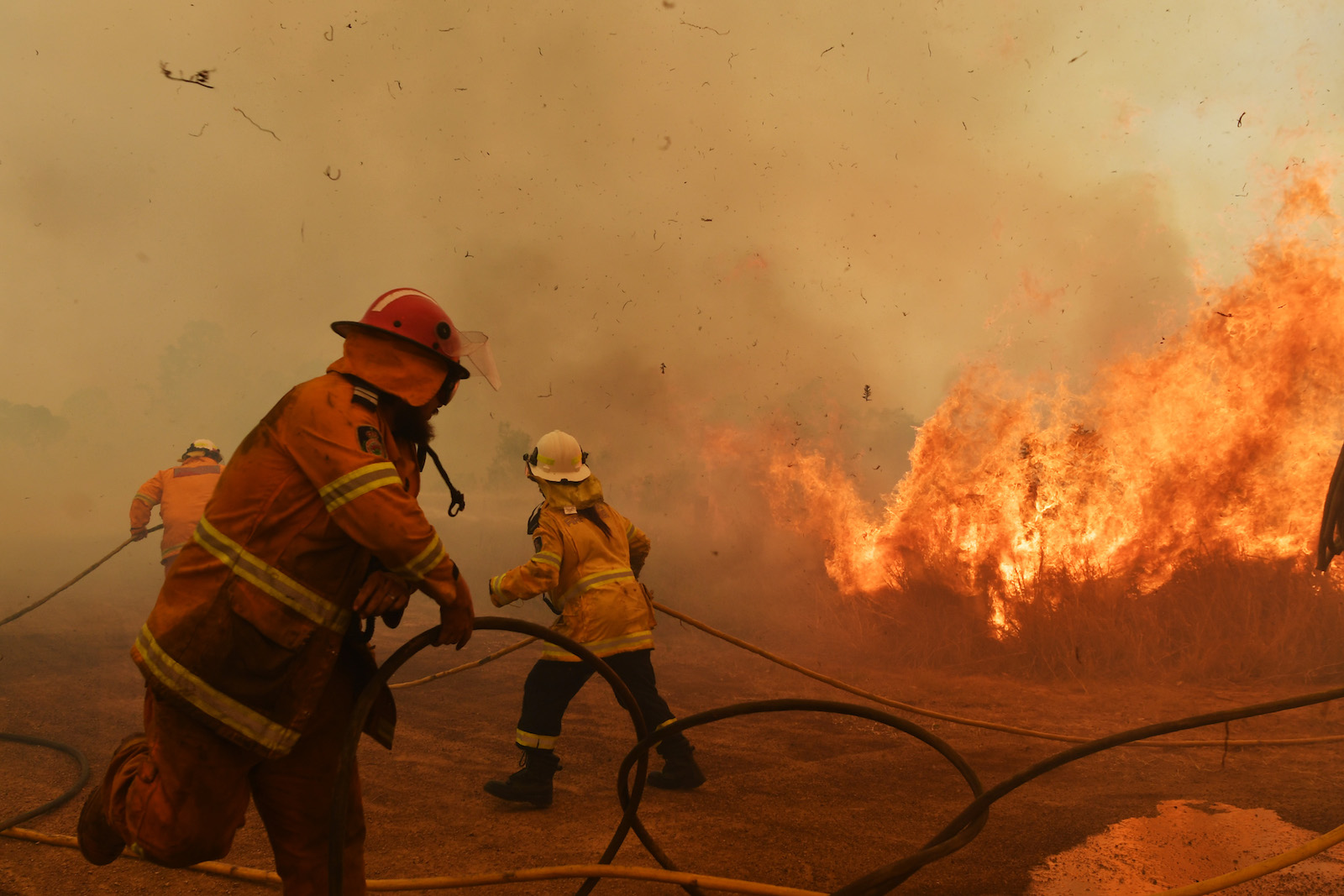
All these mitigations will fail unless we end the burning of fossil fuels. That is the deep, destabilizing presence, and so long as it continues (or in its current state, accelerates), efforts to ameliorate its effects will falter. Yet as the most recent IPCC report emphasizes, global warming is already baked into the planet for decades, perhaps centuries. Moreover, even replacing combustion as an energy source with sun and wind will still leave the structures that a fossil-fuel civilization created. We will still have exurbs at risk from fire; landscapes both slashed and uncultivated and prone to blowups; and biotas starved for the right kind of burning.
Our maturing fire age isn’t just about fossil-fuel powered climate change since land use contributes in equally significant ways. But the pyric pandemic is mostly about fossil fuels because they supply the power that underwrites land use in industrialized societies. They have made possible how we live on the land and relate to fire. We will be coping with the legacy of industrial combustion for a long time. Stripping away the overlay of lithic landscapes will still leave us with fire-prone living landscapes famished for the flames our addiction to fossil fuels tried to remove.
What we have made, even with all its unanticipated consequences, we can unmake, even accepting more unanticipated consequences. But however the Pyrocene evolves, we have a lot of fire in our future.
